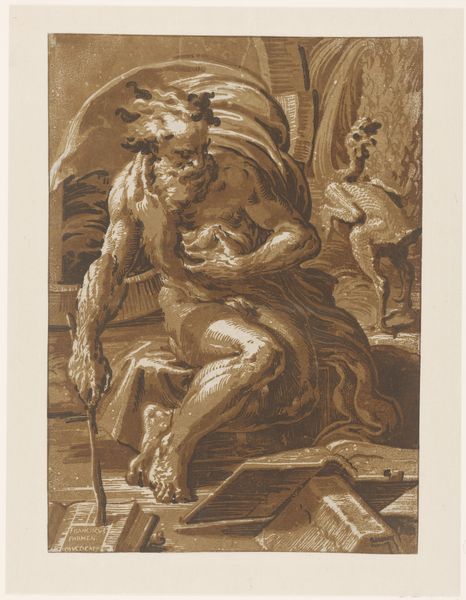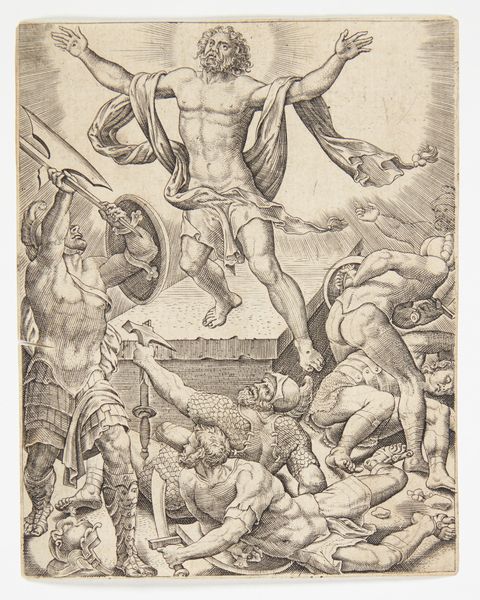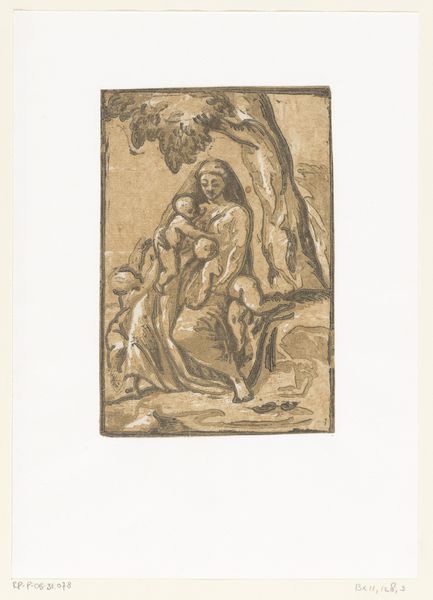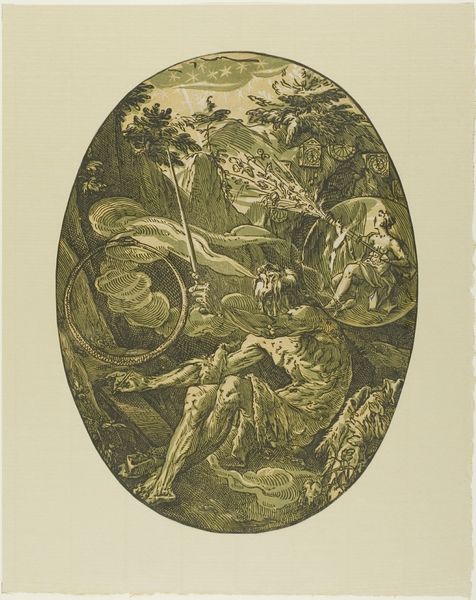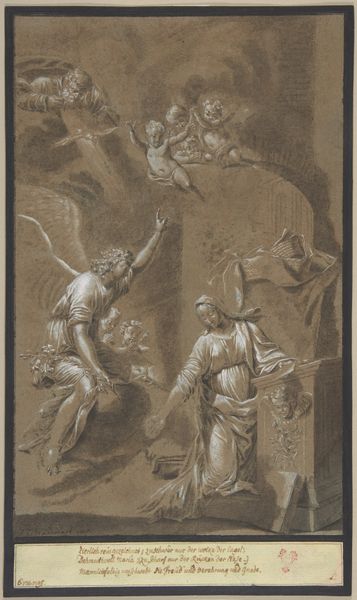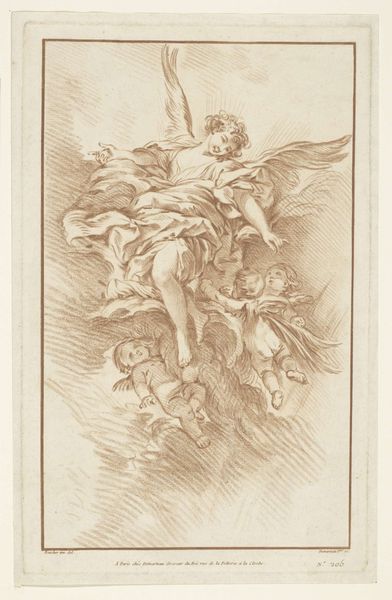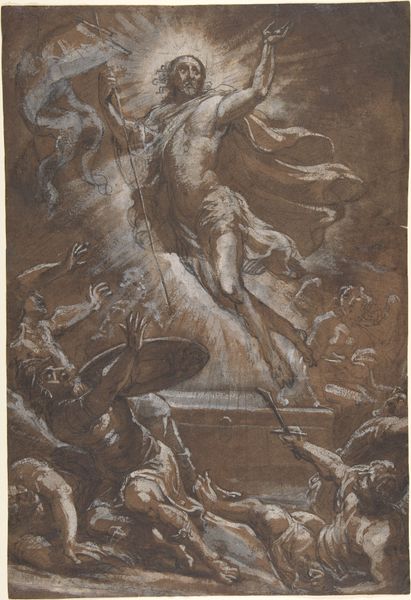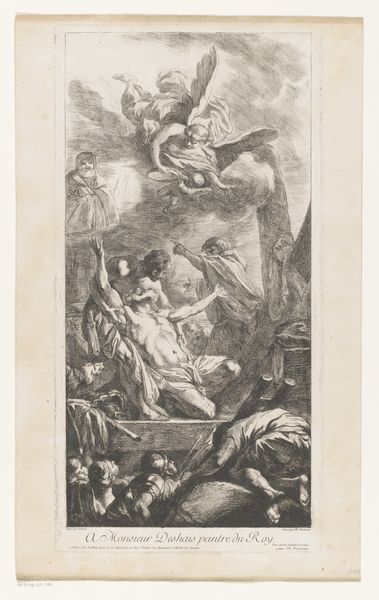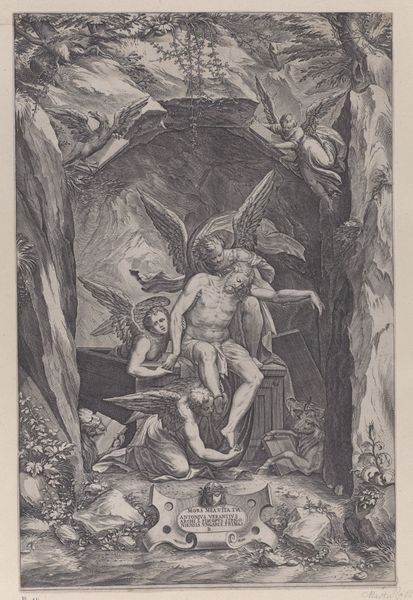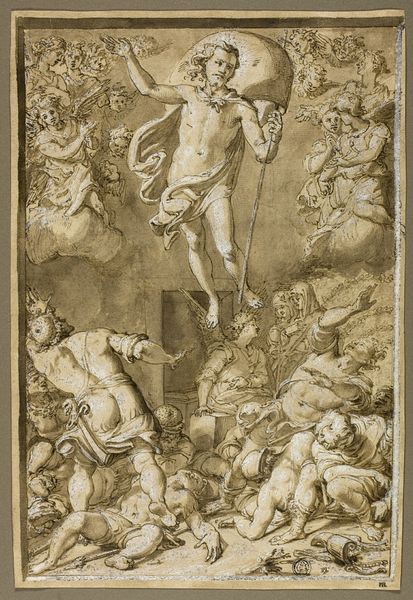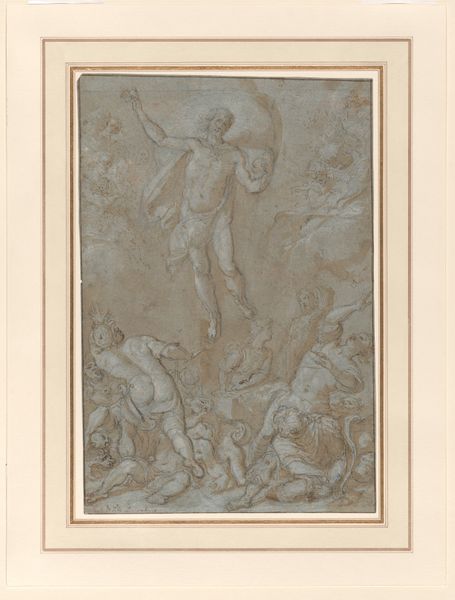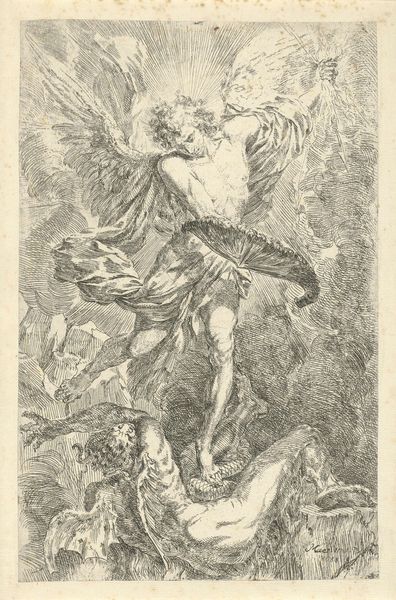
intaglio, engraving
#
intaglio
#
mannerism
#
figuration
#
earthenware
#
history-painting
#
nude
#
engraving
Dimensions: height 362 mm, width 237 mm
Copyright: Rijks Museum: Open Domain
Curator: What a striking image, isn’t it? Giovanni Gallo, working sometime between 1535 and 1599, presents us with ‘Perseus with the Head of Medusa’ rendered through intaglio, a type of engraving. Editor: Yes, it's immediately powerful. A lot of movement and quite dramatic for an engraving, a scene of triumph and conquest, all in earthen tones. Curator: Precisely! Consider the layers here. We see Perseus, nude but for his helmet and some armor, standing over a figure. He holds Medusa's severed head aloft, while underfoot we see another representation of her slain body. It speaks of power and subjugation, but what do those symbols evoke in you? Editor: I see the cultural resonance. Perseus is, of course, the archetypal hero, and Medusa represents feminine power made monstrous. The act of decapitation, so brutally depicted here, signifies control of that power and its repurposing for patriarchal ends. But I also think of the violence inherent in myth and the stories we choose to celebrate. Curator: Very insightful. Notice the Mannerist style, its embrace of exaggerated poses, a departure from classical restraint. Perseus almost seems to dance on his victim. How might contemporaries have perceived this exaggerated style conveying messages about leadership and social norms? Editor: The artificiality highlights the performative nature of power, right? It's not just about the act, but the spectacle of it. This engraving would have circulated among the elite, solidifying their status and perhaps even legitimizing their own exercise of control, echoing current political climates even today. Curator: Exactly! And the choice of intaglio, a relatively reproducible medium, suggests a desire to disseminate that message widely. A very different message in contrast to the singular power of, say, painting. Editor: It brings us to the present, thinking about our relationship to art and how reproductions shape our cultural landscape. This is not just a historical scene but a lens through which we can critically examine contemporary power dynamics. Curator: Well, I've certainly found new layers of interpretation looking through your lens today. Thanks! Editor: Likewise! I find this encounter of the image incredibly insightful as well.
Comments
No comments
Be the first to comment and join the conversation on the ultimate creative platform.
